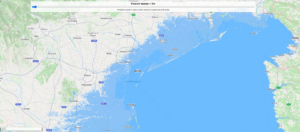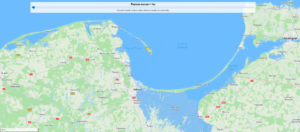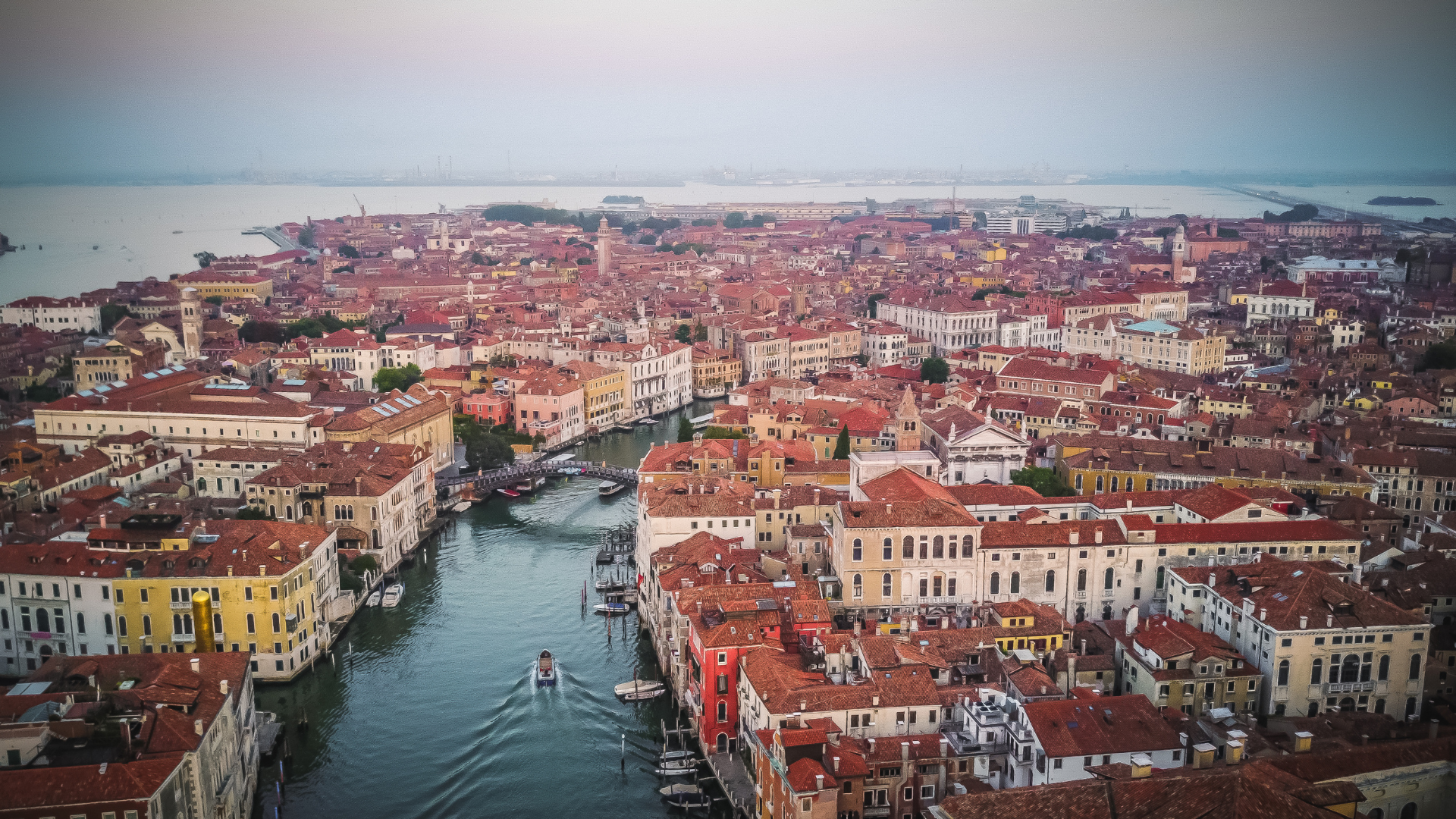Venice, a city built on water, could experience regular flooding by 2150, with periodic submersions of 65% of its area. This is the scenario predicted by Italian scientists at the Istituto Nazionale di Geofisica e Vulcanologia (INGV), analyzing the impact of climate change on sea levels in the Venetian Lagoon. Their research indicates that sea level rise, land subsidence and extreme weather events such as strong sirocco winds can lead to a temporary rise in water levels of up to 3.5 meters above current values. The current flood control system – MOSE, designed to protect against tides up to 3 meters high, may prove inadequate in the face of such changes.

Graphic simulation of a 3-meter water level rise near Venice / https://www.streetmap.pl/seelevel/#8.89/45.4547/12.4811
The MOSE System: Engineering Response to the Threat
The MOSE (Modulo Sperimentale Elettromeccanico) system is a complex of 78 movable dams designed to protect Venice from high tides. Construction of the system began in 2003 and was fully launched in 2020. MOSE was designed to protect the city from tides up to 3 meters above sea level. However, forecasts indicating the possibility of exceeding this level in the future raise concerns about the system’s effectiveness in the long term.
Polish coast also under threat
Similar threats also affect the Polish coast. According to Prof. Jacek Piskozub of the Institute of Oceanology at the Polish Academy of Sciences, Poland could experience more than 90% of the global average sea level rise. Particularly vulnerable are the Vistula Fens (Żuławy Wiślane), which lie below sea level and are prone to land subsidence. Projections suggest that by 2100, sea levels could rise by about 1 meter, which, combined with coastal backflow and storms, could lead to regular flooding of these areas. Simulations by Climate Central (a nonprofit research organization dedicated to analyzing data and disseminating climate knowledge), show that some of the Gdańsk historic sites – St. Mary’s Basilica and Długa Street, as well as downtown Gdynia, may end up underwater.

Graphic simulation of a 1-meter water level rise in Poland / https://www.streetmap.pl/seelevel/#8.49/54.4946/18.8431
Need for adaptation measures
In light of these climate forecasts, there is a growing need for adaptation measures. In Poland, this means investing in raising river dikes and building storm gates in coastal cities. Prof. Piskozub stresses that without such steps, coastal areas will not be protected from flooding, which could lead to serious economic and social losses.
Sources: naukawpolsce.pl, Crazy Nauka, Onet, Nauka o klimacie, Podróże Onet, Polskie Radio






